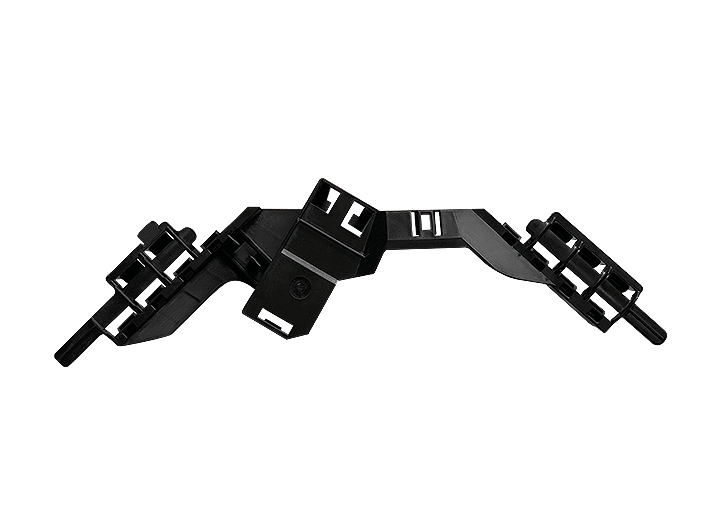I.Introduction
Thin wall injection molding is a specialized process crucial for manufacturing intricate plastic components with reduced wall thickness. As demand for precision and efficiency grows, users often encounter challenges related to warpage and shrinkage. This article delves into strategies to address these issues and provide solutions to common user questions.

II.Understanding Warpage and Shrinkage
Warpage and shrinkage can compromise the quality and performance of thin wall injection molded parts. Warpage refers to the deformation or twisting of the region, while shrinkage involves a size reduction during the molding process’s cooling phase.
III.Material Selection and Its Role
Selecting the suitable thermoplastic material is critical in minimizing warpage and shrinkage in thin wall injection molding. Different materials exhibit varying properties that directly influence the outcome of the molded part. Factors such as the material’s melting point, flow characteristics, and cooling behavior play a pivotal role.
IV.Design Considerations for Thin Wall Molding
Achieving success in thin wall injection molding goes beyond material selection. Proper part design is equally instrumental in preventing warpage and shrinkage. Design considerations play a crucial role in determining the structural integrity of the final product.
V.Optimizing Process Parameters
Optimizing process parameters is paramount to achieving precision and consistency in thin-wall injection molding. Temperature, pressure, and cooling rates are pivotal in determining the final part quality and addressing warpage and shrinkage issues.
Temperature Control
Fine-tuning the temperature settings during the injection molding process is crucial. A balance between melting the thermoplastic material adequately and preventing excessive heat buildup is essential. This balance minimizes the risk of warpage and ensures uniform shrinkage across the molded part.
Pressure Adjustments
Controlling injection pressure is another critical aspect. Adjusting pressure parameters helps achieve optimal material flow and prevent uneven distribution, which can contribute to warpage. Collaborating with a knowledgeable plastic molding company ensures these parameters align with the specific requirements of thin wall molding.
Cooling Rates
Adequate cooling is vital for minimizing shrinkage and maintaining dimensional stability. Controlled cooling rates prevent abrupt temperature changes, reducing the likelihood of internal stresses that lead to warpage. Strategic placement of cooling channels and optimized cycle times contribute to a successful thin wall injection molding process.
VI.Advanced Simulation Techniques
Advanced simulation techniques offer a proactive approach to addressing warpage and shrinkage challenges in thin-wall injection molding. Virtual prototyping allows plastic molding companies to identify potential issues before the physical molding process begins.
Overview of Simulation Tools
Simulation tools like Moldflow or Autodesk Simulation enable engineers to digitally analyze the mold filling, cooling, and packing phases. This foresight helps predict how a specific design will behave during manufacturing, allowing for adjustments to prevent warpage and shrinkage.
Enhancing Design and Manufacturing
Virtual prototyping not only aids in identifying potential issues but also provides insights into optimizing the design for thin wall molding. By simulating different scenarios, designers and engineers can refine the geometry, material selection, and process parameters to enhance the overall manufacturability and reduce the risk of warpage and shrinkage.
VII.Common User Questions and Answers
Now, let’s address some common questions users may have when considering thin-wall injection molding services.
Q: How does thin wall injection molding impact part strength?
A: Thin wall injection molding, when executed with precision, can produce parts with exceptional strength. Proper material selection, design considerations, and process optimization contribute to the structural integrity of the final product.
Q: What challenges can arise in thin wall molding, and how are they mitigated?
A: Challenges such as warpage and shrinkage are common. Material selection, design features, and careful process optimization are vital strategies to mitigate these challenges. Collaborating with an experienced plastic molding company ensures effective problem-solving.
Q: Are there cost implications associated with thin wall injection molding?
A: While thin wall molding may have slightly higher tooling costs due to intricate designs, the potential for material savings and faster cycle times often outweigh these initial expenses. It’s crucial to discuss cost considerations with your chosen plastic molding company.
VIII.Case Studies and Success Stories
Understanding the practical application of strategies to address warpage and shrinkage in thin wall injection molding is crucial. Let’s explore real-world case studies and success stories that highlight the positive impact of practical solutions.
Case Study 1: Automotive Components
A plastic molding company successfully minimized warpage in thin wall-molded automotive components by optimizing cooling rates. This improved dimensional stability and enhanced part quality, meeting stringent industry standards.
Case Study 2: Consumer Electronics
In a consumer electronics project, advanced simulation tools were employed to predict and address potential shrinkage issues. The virtual prototyping allowed for adjustments in design and process parameters, resulting in a flawless production run with minimal shrinkage.
Success Story: Reduced Production Costs
By collaborating with a knowledgeable plastic molding company, a client achieved significant cost savings in material and production time through careful design considerations and optimized process parameters. Despite the initial tooling costs, the overall project expenses were substantially reduced.
As we conclude this article, it’s evident that addressing warpage and shrinkage in thin wall injection molding requires a holistic approach. Users can achieve exceptional results in lean wall molding projects by combining material expertise, thoughtful design, meticulous process optimization, and advanced simulation tools.
IX.Conclusion
In thin-wall injection molding, success hinges on a thorough understanding of material behavior, design principles, and process optimization. By addressing warpage and shrinkage through strategic measures, users can ensure the production of high-quality, precision-molded components.
As you consider thin wall injection molding for your projects, partnering with a reputable plastic molding company with expertise and a successful project track record can make a significant difference. Embrace the insights this article shares to navigate the challenges and unlock the full potential of thin wall molding.
In conclusion, while there are considerations regarding costs in thin-wall injection molding, the long-term benefits often outweigh the initial investment. Collaborating with a reputable plastic molding company, whether locally or internationally, can help navigate these considerations effectively.
